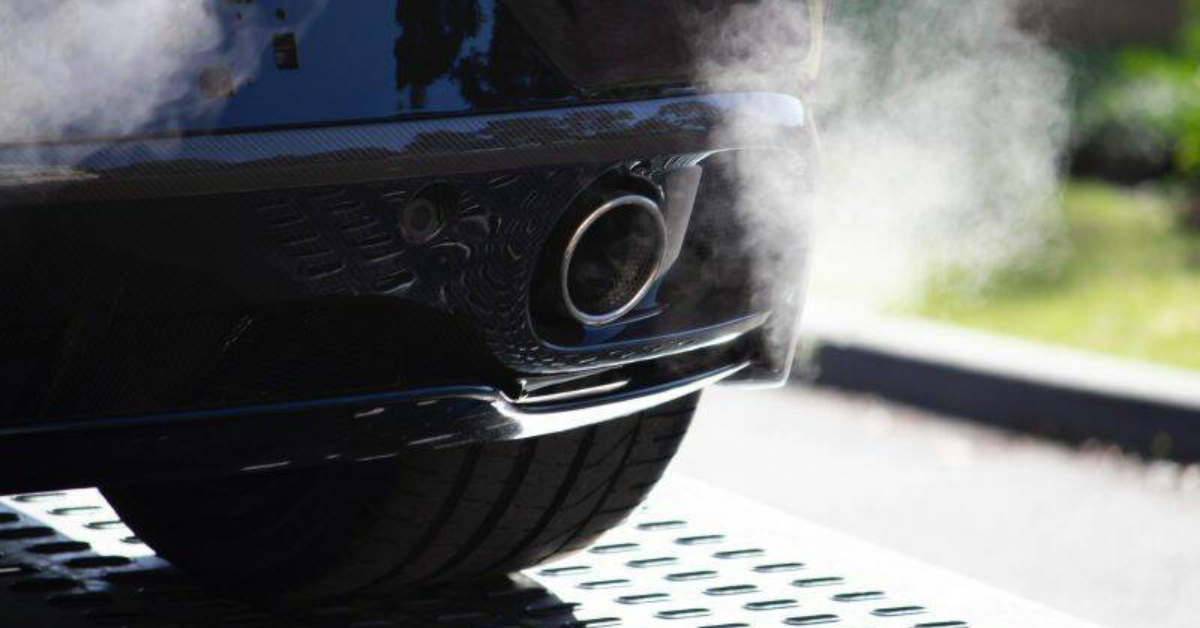At CarGaragee, we focus on advanced technologies in modern vehicles that aim to improve safety, increase power, enhance efficiency, and reduce emissions. One key innovation is the automatic start-stop system, designed to save fuel by turning off the engine at idle and restarting it quickly. This feature, often identified by a button with an “A” and a circle, highlights the progress in automotive technology.
This system has become common in cars today, though some models use different symbols or wording to represent it. Whether in traffic or at a red light, the automatic start-stop system not only saves fuel but also reflects how far vehicle technology has advanced, making driving more efficient and environmentally friendly.
What does the ‘A’ button do?
Pressing the A button will temporarily disable the automatic start-stop function for the current drive. This means the engine will not turn off automatically at stops, allowing for an uninterrupted driving experience.
What Does The ‘A’ Button With A Circle Around it Mean?
In vehicles equipped with an automatic stop-start system, the button marked with the letter A inside a circle helps the driver control the system. It allows the operator to turn the automatic stop-start system on or off, offering full control of this fuel-saving feature when needed.
Where is the ‘A’ button?
In modern vehicles, the A button is typically located on the center console among other buttons. It is easily accessible to allow drivers to manage the automatic start-stop system conveniently while driving.
Automatic Stop-Start Systems Explained
The automatic stop-start system is found in many vehicles today and is designed to turn the engine off when the vehicle stops and quickly restarts it when the accelerator is pressed or the brake pedal is released. This system gained popularity in Europe and became common place in the United States after 2017, using parts like a deep-cycle battery, an EFB battery, and a heavy-duty starter to handle frequent engine restarts. The engine starter in these systems is typically rated for 30,000 starts.
The First Auto Start-Stop System
The first automatic start-stop system appeared in the Toyota Crown during the 1970s. While the technology functioned, limitations in battery technology and engine control systems made it less practical. It later regained popularity with European automakers like BMW and Mercedes-Benz. Earlier start-stop systems saved gas but were less refined, causing a jolt when the car switched on and off. Modern mild-hybrid vehicles now feature smoother start-stop systems, enhancing the driving experience even in heavy traffic.
Are there conditions where start-stop won’t activate?
Yes, there are specific conditions where the start-stop system won’t activate for safety reasons. If the vehicle comes to a stop and the engine does not shut off, you can use the arrow buttons on the left side of the steering wheel to navigate to the start-stop settings on the dash display.

The system will indicate which condition hasn’t been met, such as the steering wheel being turned or the driver seatbelt not fastened. Other conditions include:
- Driver door not closed
- Blower on full defrost
- Blower on MAX A/C
- Cabin temperature not reached
- The shifter is in reverse
- Hood is open
- Low battery power
- Battery too hot or too cold
- Vehicle is in 4 LOW
- Less than 5 mph achieved since the last start-stop activation
- Adaptive Cruise Control is on
Using the ‘disable auto start-stop’ button
The disable auto start-stop button allows drivers to temporarily turn off the feature. By pushing the A button, the engine won’t automatically shut off when the vehicle is stopped. When the light illuminates on the button, it means the system is OFF, but this must be manually reset after each drive as it cannot be permanently disabled, as recommended by Jeep.
When Does The Auto Stop-Start System Not Operate?
Warm-Up Cycle
The system won’t function until the vehicle completes its warm-up cycle. This ensures the engine, oxygen sensors, and catalytic converter reach their operating temperature range, allowing the system to perform optimally.
The Start-Stop Button Is Pressed
If the start-stop button is pressed, the system will turn off. Drivers must press the button at the start of each drive to deactivate the auto stop-start system, preventing it from engaging.
Engine Faults Or Error Codes
The system will disable itself if there are engine faults or error codes, such as a faulty temperature sensor or thermostat. A diagnostic trouble code can indicate the cause of the issue.

4×4 Lo Enabled
In 4×4 vehicles, enabling low-range mode prevents the stop-start system from functioning. This ensures smooth operation during low-speed off-roading.
Low Battery Voltage
If the battery voltage is too low, the system won’t operate to preserve battery charge.
Temperature Fluctuations
The system won’t function if engine temperature, cabin temperature, or outside ambient temperature are outside the desired range.
Automated Parking
During automated parking maneuvers, the system is temporarily disabled until the vehicle is fully parked.
Gear Selection
If the vehicle is not in a forward gear range, the system will not operate.
Read More:
How long will a Car Run with a Bad Alternator?
How to Reset VSC Light Lexus? A Complete Guide
When To Turn Off The Stop-Start System

Drivers may choose to turn off the stop-start system for specific reasons, such as feeling annoyed by frequent engine restarting, especially in traffic. Other practical reasons include reducing strain on the battery, minimizing the restart counts on the starter, or preventing the A/C from turning off.
How Much Fuel Does Auto Stop-Start Save?
The automatic stop-start system is designed to avoid wasting fuel by turning off the engine at idle and burning less fuel, which reduces combustion gases and pollutants entering the atmosphere.
Modern stop-start systems can save between 7.27% and 26.4%, as reported by the Society of Automotive Engineers, with fuel consumption reductions of 4% to 10% observed in vehicles using stop-start technology, according to Natural Resources Canada.
What Are The Benefits Of The Automatic Engine Stop-Start Button?
Enhanced Fuel Efficiency
The automatic stop-start system significantly enhances fuel efficiency by temporarily stopping the engine at intersections or stoplights. This technology can reduce fuel consumption by up to 10%, depending on driving conditions, while also helping vehicles stop wasting fuel and saving the battery during idle periods.
Reduced Emissions
By stopping and starting the car’s engine, this system lowers green-house gasses compared to running continuously. Turning the engine off during short stops greatly decreases emissions, leading to improved air quality and reducing the car’s environmental footprint.

Prolonged Engine Life
The system helps prolong engine life by reducing strain on traditional combustion engines, including parts like pistons and spark plugs. Installing a stop-start system protects the engine from the wear caused by frequent starting and stopping, thereby extending its lifespan and protecting individual components from wear and tear.
What Are The Common Issues With the Automatic Engine Stop-Start System?
Unresponsive System
An unresponsive system occurs when it fails to disengage or engage correctly due to malfunctioning software, faulty sensors, or issues within the vehicle’s electrical system. These problems can disrupt the proper operation of the stop-start feature, leading to inconvenience for drivers.
Frequent Engine Stalling
Frequent engine stalling can happen when the system is activated, causing discomfort during the driving experience. This may result from throttle control issues, a broken starter motor, or an improper fuel delivery system, all of which require professional attention to resolve.
Uneven Transmission After Restarting/Stopping
Issues like uneven transmission during engine restarting or stopping may signal problems with system components, such as a starter-battery combo or a transmission control module. A dying starter, weak battery supply, or faulty module can cause delays in engaging the transmission, leading to unnecessary interruptions.
False or Unintended Activation
False or unintended activation may occur if the system intervenes unnecessarily, cutting power on uneven terrain or steep inclines. This could be due to logic issues, a speed sensor, or incompatibilities with the vehicle’s sensors and controller, especially during short stops or while engaging the brake pedal.
How to Troubleshoot Issues With The Automatic Engine Stop-Start Button?
Consult Owner’s Manual

Start by consulting your owner’s manual to review the precise functions and restrictions of the Automatic Stop-Start System in your car. Certain issues may arise depending on the model year, and the manual can guide you on addressing them effectively.
Temporarily Disable the System
If you’re experiencing problems, you can temporarily disable the system by pressing the A button. This will provide an uninterrupted drive, but remember that disabling the system may reduce fuel efficiency and increase emissions levels.
Seek Professional Help
If the issue persists, seek professional help by consulting an experienced mechanic. They can identify the problem, ensure your vehicle is checked, and spot and fix any underlying issues to restore the system’s proper functioning.
FAQs
What does an A with a circle around it mean in a car?
The “A” with a circle around it symbolizes the automatic engine start/stop system. This feature helps reduce fuel consumption and emissions by shutting off the engine when the vehicle is stationary and restarting it when needed.
What is the A off switch in a car?
The “A off” switch allows drivers to disable the automatic start/stop system temporarily. When activated, the system will not automatically stop the engine at idle.
What does an A with a circle around and an exclamation mark mean in a Jeep?
This symbol in a Jeep indicates an issue with the start/stop system. The exclamation mark means the system is not functioning properly and may need inspection or servicing.
What is the A with a circle around it in Kia?
In Kia vehicles, the “A” with a circle around it also represents the automatic start/stop system, providing the same fuel-saving and emission-reducing benefits.
Is auto stop-start bad for your car?
The auto stop-start system is not bad for your car when working correctly. It’s designed to improve efficiency. However, frequent use may increase wear on components like the starter and battery if they are not built to handle frequent restarting.
What is the A in A circle symbol?
The “A in a circle” symbol refers to the activation or status of the start/stop system. It indicates whether the system is engaged or disabled based on the driving conditions or manual controls.

Mian Hashir is a passionate automotive enthusiast and the lead author at Car Garagee, a website dedicated to providing in-depth car reviews, maintenance tips, and the latest news in the automotive world. With years of experience in the industry, Hashir combines his technical knowledge with a love for cars to deliver insightful and engaging content. Whether you’re a car owner or a curious reader, Mian Hashir’s articles help readers make informed decisions, from choosing the right vehicle to understanding how to keep it in top condition.







